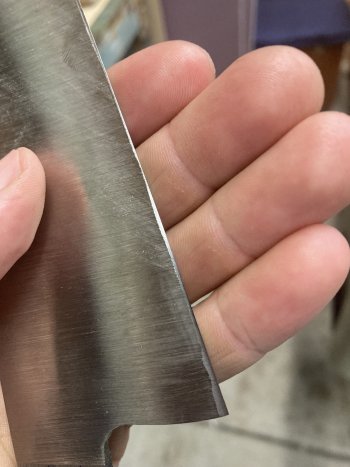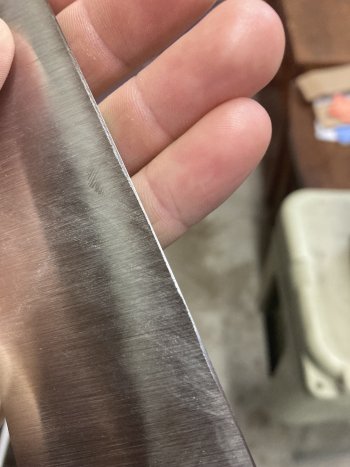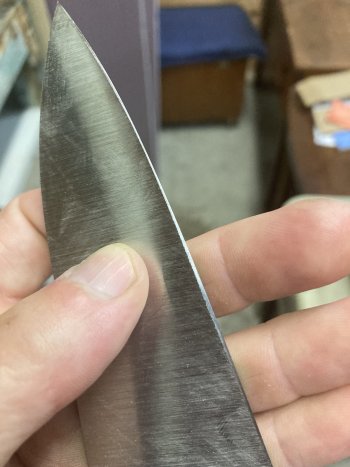meteorokra
New Member
hey y'all, i'm new here and new to knife making. i've been having trouble getting consistent thickness bte off the grinder.
i've got a pheer 2x72 454, running around 30% on the vfd with a fresh 60 grit blaze. i wet grind too, using a little sprayer.
i attached pics of my current issue on an gyuto style knife in aeb-l at 63hrc. any advice is appreciated and thanks for looking.
i've got a pheer 2x72 454, running around 30% on the vfd with a fresh 60 grit blaze. i wet grind too, using a little sprayer.
i attached pics of my current issue on an gyuto style knife in aeb-l at 63hrc. any advice is appreciated and thanks for looking.




